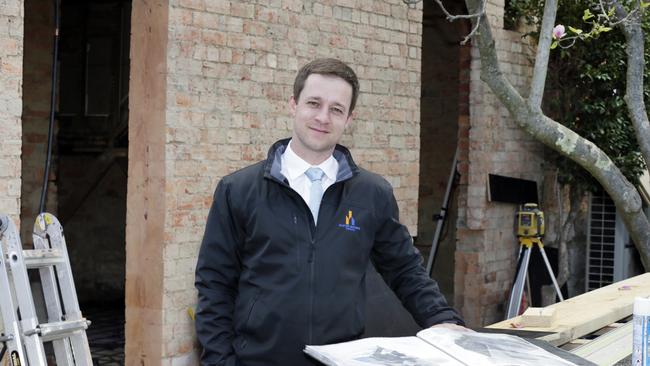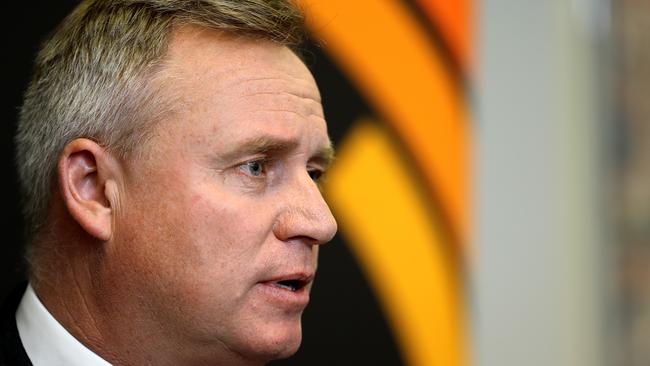Tasmania hit by tradie shortage
TASMANIA is struggling to cope with a surge in building activity with employers forced to bring in tradespeople from interstate to fill jobs.

Tasmania
Don't miss out on the headlines from Tasmania. Followed categories will be added to My News.
TASMANIA is struggling to cope with a surge in building activity with employers forced to bring in tradespeople from interstate to fill jobs.
Large construction projects and flood repairs has led to a shortage of tradies and industry officials warn the problem is only expected to get worse with many more major developments in coming years.
More than 400 tradies have been employed on both the Royal Hobart Hospital works and the Parliament Square development, with hundreds of others handling repairs following the devastating floods in May this year.
Master Builders Tasmania chief executive Matthew Pollock told the Mercury there was absolutely a link between the big projects and the shortage of skilled construction workers across the state.

He said Tasmania’s building and construction industry was the fastest growing in the country and the May floods placed an extra demand on trade skills.
“In a normal year the industry could have coped with this, but this is not a normal year,” Mr Pollock said.
“With the scale of work underway in the residential and commercial sectors, this extra demand for trade skills has pushed the industry beyond full capacity.”
He said this had resulted in significant wage growth and meant interstate tradies had been brought in to fill the gaps.
“We have also seen some projects delayed because they simply cannot find the tradespeople to do the work,” he said.
Boatbuilder Incat is feeling the pinch, recently offering jobs to electricians and fit-out tradies in South Australia and was also looking for fitters, mechanics and welders.
MORE: INCAT TURNS TO SOUTH AUSTRALIA FOR WORKERS
The latest Tasmanian Building and Construction Industry Training Board state of the industry report in April said the sector still had about eight months or $1.6 billion worth of work yet to be done.
Industry activity has increased for three straight years with employees up from 18,600 workers in August 2016 to 21,100 in November last year.
TBCITB chief executive Simon Cocker said industry employment was 10 to 20 per cent above the 10-year average.
He said a significant proportion of interstate and international workers, like the RHH plasterers, had come into the state in the past 12 months.
He said it was hard to quickly adjust because the only way was through apprenticeships, which required at least three years training.
“It’s critical to keep getting people into apprenticeships, we want the opportunities to go to local kids,” Mr Cocker said.
TasTAFE chief executive Jenny Dodd said in June this year it had 4385 active apprentices, up 12 per cent from 3930 in June 2017.

“Construction and allied trades have experienced a 30 per cent increase in enrolments in the south — an additional 220 enrolments over the past 12 months,” she said.
“Wherever possible, TasTAFE runs additional classes to accommodate increasing demand for apprentices.”
Infrastructure Minister Jeremy Rockliff said the sector was booming which had resulted in jobs and investment in Tasmania.
“We are taking action to match the right people with the right skills to fill jobs both now and into the future,” he said.

He said the applications were open for the Government’s User Choice Program, with $20 million available to subsidise the cost for training apprentices, while the latest budget had allocated $7.5 million over three years for small business grants worth up to $5000 for each new trainee.
Mr Rockliff said Tasmania had the highest overall apprentice completion rate in the nation at more than 58 per cent.
Master Builders also has a Women Building Australia initiative and a pathways program for secondary students to help build the skills base of the workforce.
jack.paynter@news.com.au
Originally published as Tasmania hit by tradie shortage


